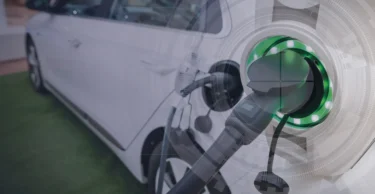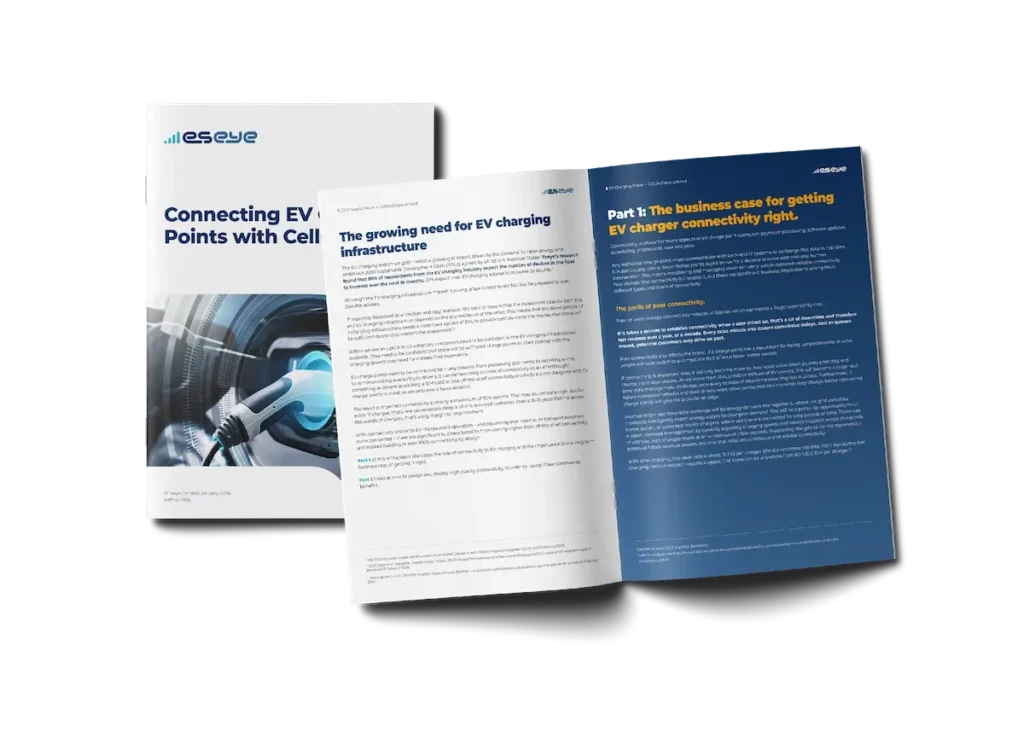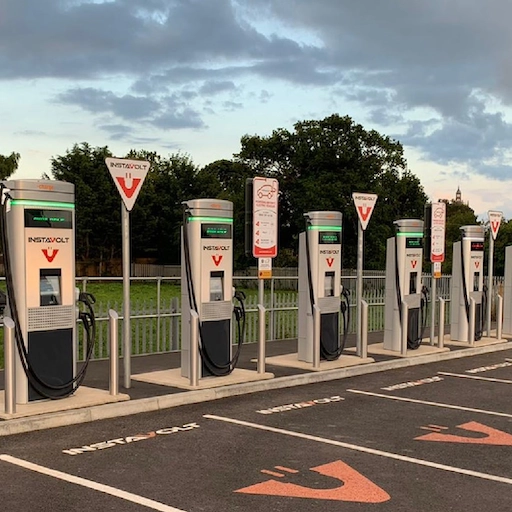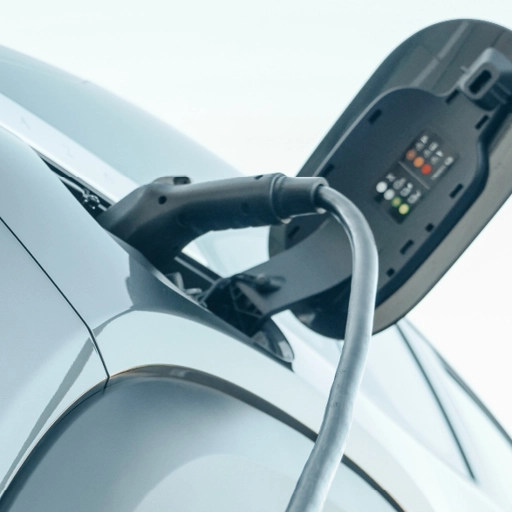

Connecting EV Charge
The growing need for EV charging infrastructure
The EV charging and smart grid market is growing at speed, driven by the demand for clean energy and ambitious 2030 Sustainable Development Goals (SDGs) agreed by all 193 U.N. Member States. Eseye’s research found that 80% of respondents from the EV charging industry expect the number of devices in the field to increase over the next 18 months. 27% expect their EV charging estates to increase by double.
The EV charging and smart grid market is growing at speed, driven by the demand for clean energy and ambitious 2030 Sustainable Development Goals (SDGs) agreed by all 193 U.N. Member States. Eseye’s research found that 80% of respondents from the EV charging industry expect the number of devices in the field to increase over the next 18 months. 27% expect their EV charging estates to increase by double.
Before we see an uptick in EV adoption, consumers need to be confident in the EV charging infrastructure available. They need to be confident that there will be sufficient charge points on their journey with the charging speeds they need for a stress-free experience.


In this article
EV charge points need to be connected for many reasons, from processing payments, to reporting errors, to communicating availability to drivers. It can be tempting to think of connectivity as an afterthought, something as simple as sticking a SIM card in. But off-the-shelf connectivity products are not designed with EV charge points in mind, so are only ever a basic solution.
With connectivity critical to EV charge point operation – and becoming ever more so as transport becomes more connected – there are significant business benefits from aiming higher than off-the-shelf connectivity, and instead building in near-100% connectivity by design.
Part 1 of this page discusses the role of connectivity in EV charging and the importance to the long-term business case of getting it right.
Part 2 looks at how to design and deploy high quality connectivity, in order to realize these commercial benefits.
Connectivity is critical for many aspects of EV charge point operation: payment processing, software updates, scheduling, promotions, and user analytics.
Part 1: The business case for getting EV charger connectivity right
Here is the restructured text with fully justified alignment, ensuring each line is filled completely until the paragraph ends:
Connectivity is critical for many aspects of EV charge point operation: payment processing, software updates, scheduling, promotions, user analytics. Any individual charge point must communicate with back-end IT systems to exchange this data in real time. It is particularly critical since charge points aspire to run for a decade or more with minimal human intervention. This means monitoring and managing them remotely, which demands reliable connectivity.
Few dispute that connectivity is important, but there are significant business implications arising from different types and levels of connectivity.
The perils of poor connectivity.
Poor or even average connectivity reduces utilization which represents a huge opportunity cost. If it takes a minute to establish connectivity when a user drives up, that’s a lot of downtime and therefore lost revenue over a year, or a decade. Every extra minute also causes cumulative delays. And as queues mount, potential customers may drive on past.
Poor connectivity also affects the brand. If a charge point has a reputation for being temperamental or slow, people will soon switch to a competitor that offers a faster, better service.
If connectivity is important now, it will only become more so. New apps allow smart journey planning and charge point reservations. As we move from thousands to millions of EV owners, this will become a major real-time data management challenge, with every minute of downtime meaning lost business. Furthermore, if future connected vehicles and their drivers want other connected services while they charge, better-connected charge points will give the provider an edge.
Another major real-time data challenge will be energy demand management, where the grid uses data models to intelligently match energy supply to changing demand. This will be a particular opportunity for in-home, public, or workplace trickle chargers, where vehicles are connected for long periods of time. These can support demand management by carefully adjusting charging speeds and energy buyback across thousands of vehicles, with changes made at time intervals of a few seconds. Supporting the grid to do this represents a potential future revenue stream, and one that relies on continuous and reliable connectivity.
With slow charging, the ideal ratio is about 10 EVs per charger (the EU recommends this). With rapid/ultra-fast charging, various research reports suggest that there can be anywhere from 80–1,800 EVs per charger.
Let me know if you need any further refinements!
The business case for better connectivity.
All of this points to a strong business case for highly reliable connectivity. Short term, EV operators want assets to be as profitable as possible, as soon as possible. A single 50kW charge point can cost up to £40,000 to install and earn about 14p–25p per kWh. A full charge of a Nissan Leaf would deliver 24kWh over 30 minutes making up to £6.25, so even a top-rate charger at 80% utilization would take around a half year to start making a profit, not accounting for running costs. Most would take much longer.
Operating such long-term business models in a fast-moving, early-stage market also comes with a risk of being made obsolete by new innovations. The sooner the asset pays back, the more attractive the business case.
As utilization increases, poor connectivity could mean several million pounds in lost annual revenue, as small losses are scaled up across thousands of chargers.
Charge points are effectively losing revenue every minute they are not in use. If business is lost due to small delays or user frustration, the point of profitability is delayed. One lost customer per day could mean an opportunity cost of over £2,000 per year for a single charger. As utilization increases, and all else being equal, that could mean several million pounds in lost annual revenue, if these small losses are scaled up across thousands of chargers.
And the longer the delay, the higher the risk it will become redundant before it becomes profitable. Better connectivity minimizes the small daily delays that add up to big annual opportunity costs.
Where charge points are provided as a service to Local Authorities, building complexes, or car parks, service license agreements will often require high levels of availability. Better connectivity will give charging companies an edge when bidding for such contracts and reduce the risk of penalties from falling below SLAs.
Longer term, reliable connectivity is key to future-proofing. It is impossible to predict exactly what the future will hold, but it is reasonable to assume more connectivity and higher flows of real-time data, with ever more complex analytics. Having high quality, reliable connectivity from the start is the best hedge against an unpredictable future.to there were/are pre-existing security requirements, for example we see this with healthcare devices.
There has always been a best practise, but nothing has been enforced."
Part 2: How to effectively design and deploy connected EV chargers
With continuous and reliable connectivity critical to EV charging business models, what should EV charging companies consider when designing and deploying connected charge points?
Aim higher than consumer-grade connectivity.
Most people’s experience of connectivity is mobile SIM cards, and these often define their expectations. Consumer SIM cards deliberately drop connections to idle devices, so operators can maximize utilization of networks. This makes sense across billions of intermittently used devices, where no one minds a short wait for the connection to re-establish when they turn on their phone.
But for IoT devices whose profitability relies on continuous connectivity, this is a poor solution. Eseye’s AnyNet Secure SIM card delivers weeks of continuous connectivity without dropping because we have built networking infrastructure to provide highly available services.
In practice, this means that when EV drivers identify themselves at the charge point with an RFID or credit card, it works instantaneously without taking a minute to re-establish a connection. A device with 90% connectivity will require users to wait to reconnect for one in ten charges, causing delays and annoyance. A device with 99.5% connectivity will have the same wait just two out of a thousand times, which most will find acceptable.
Implement good connectivity by design.
82% of respondents find that getting the IoT device right is the key to unlocking success, Eseye’s research revealed. Out of the five industries surveyed, EV charging and smart grid are running into trouble more than most, with 71% admitting their IoT devices are failing to connect due to an issue with the hardware.
A knock-on effect of consumer-grade connectivity is lower expectations in hardware design. Designers quite rightly take the view that if the connectivity is a bottleneck, there is no point investing in better components. But once EV companies come to expect near 100% connectivity, they can improve their design to take advantage of that. This requires connectivity to be considered early on, and designers to map out optimal design, component, and technology configuration choices.
This is why Eseye is not just a technology company, but also offers design consultancy via our team of specialists in RF hardware engineering and wireless M2M communications. They can guide customers through every decision – such as circuit design, component selection, implementation against OCPP protocols, cloud integration, and volume manufacturing – to ensure they are all in line with connectivity goals. We also offer a range of hardware solutions designed to be integrated into chargers to optimize connectivity.

Instavolt
InstaVolt is the provider of the UK’s largest owner-operated rapid EV charging network and offers straightforward pay-as-you-go service with no subscription or connection charge; customers simply drive up to conveniently located charge points, tap their contactless payment card, and pay only for the energy they use.
The company needed to find a connectivity partner capable of providing the high level of connectivity required to deliver an exceptional experience for its customers. InstaVolt charge points embedded with Eseye AnyNet+ SIMs are designed to operate in the field for up to 30 years. With greater than 99.5% uptime, InstaVolt has the fast and reliable connectivity it needs to build customer confidence in its nationwide charging infrastructure.
Read the InstaVolt case study
The AnyNet+ SIM embedded in our charge points offers the ability to manage and effectively switch connectivity to another provider, if needed. This ensures our chargers have high uptime wherever they are located, and our customers can simply tap, charge, and drive.”
Gary Kirkland, CTO, InstaVolt

Consider deployment locations
EV charge points are fixed firmly to the ground next to a parking space. This is non-negotiable. The customer can’t move the charge point a few meters over to get a better signal.
Any phone user knows that mobile networks have reception black spots. Deploying hundreds or thousands of charge points across a country on a single mobile network will mean 15–25% without a reliable connection. One solution is to assess each location prior to deployment and install different network SIM cards, according to best coverage. A more convenient solution is to use a single SIM technology, such as Eseye’s, which has agreements with all the major mobile network operators and can manage the best option for each individual asset. A single ‘intelligent’ Eseye SIM can be inserted into the charger at the point of manufacture, and then programmed to switch network, either locally or remotely over the air, if the connection drops.
This becomes even more important if you have a single design deployed across multiple countries, each with its own mobile networks and data rules. Working with a company like Eseye, which understands local connectivity and data processing challenges, will pre-emptively avoid many deployment headaches.
Aim for the best, prepare for the worst.
Charge points should aim to have reliable connectivity. But no system is 100%, and when they do go wrong, they need to reduce user impact, as well as business risk. The first step, as discussed above, is to minimize how often it goes wrong. The second is to ensure that the system behaves well and is user-friendly on the rare occasions it does go wrong. We recommend a validation test which simulates the most disruptive network conditions possible, to see whether the system still functions in an acceptable way to the user.
Remember security.
As with any connected device, security is vital. We are confident in our advanced SIM and network switching technology and private network security. But connected charge points are complex systems, and whether using Eseye’s technology or not, we advise contracting a third-party pen tester to test any device end to end before deployment.
Design for the future.
If you hope to run thousands of charge points remotely with minimal human intervention for 10–15 years, you need connectivity built to last. Good connectivity from the start is key. It is almost inevitable that over the next decade there will be more opportunities from data and connectivity, so building a system that is ready for this change is critical.
This extends to being prepared for changes in connectivity infrastructure. In the last 10 years, the mobile network landscape has changed beyond recognition and will do so again. Regulations on data privacy and sovereignty are changing all the time, at local and international levels.
A connected device installed for the long term needs to plan for such changes and have tools in place to remotely modify their system. Design should reflect expected advances in mobile connectivity and build in flexibility to adapt to other technological and regulatory changes. Working with experts, like Eseye, who are close to mobile network operators and understand the complex data rules around the world, can help predict and prepare for these issues, and minimize disruption when they happen.
Park’n plug
Since we’ve embedded Eseye’s SIM cards, we’ve never experienced any major issues concerning data or networks, so we are really happy with the solution. The Infinity platform interface really helps us to track connectivity around our system. It also makes our offer really scalable to meet any need we have in our business. We use the platform every day to easily configure each new site and charging point online at the commissioning stage.
Working with Eseye has really changed the game for us in terms of optimizing Park’n Plug’s continuity of service. We now have no connectivity issues, and we know we can go further and further with no problems.”
Olivier Toggenburger, Business Development Manager, Park’n Plug.
Since we’ve embedded Eseye’s SIM cards, we’ve never experienced any major issues concerning data or networks, so we are really happy with the solution. The Infinity platform interface really helps us to track connectivity around our system. It also makes our offer really scalable to meet any need we have in our business. We use the platform every day to easily configure each new site and charging point online at the commissioning stage.
Working with Eseye has really changed the game for us in terms of optimizing Park’n Plug’s continuity of service. We now have no connectivity issues, and we know we can go further and further with no problems.”
Moving from good to great connectivity
Connectivity is not just a technical consideration but one on which long-term business models depend. Good, reliable connectivity often goes unnoticed. But poor connectivity causes delays to deployment, leads to unnecessary downtime, reduces revenue growth, and alienates customers – all potentially damaging long-term brand value.
As EVs become mainstream, and the industry matures, better-connected charge points will be the more commercially attractive proposition. EV charging companies have an opportunity to aim high when it comes to connectivity, to deliver the best long-term service for their customers. They should grab this by building highly connected devices which work everywhere, all the time, and which will continue to work as mobile networks, data flows, connected transport, and customer expectations evolve.
To talk to Eseye about the issues raised in this whitepaper or discuss EV charging solutions, please contact.
Start your journey to IoT success
The best time to choose Eseye was when your project began.
The second best it today.
Get your personalised IoT Readiness Level Assessment compared to market best practices and similar projects within your industry vertical.